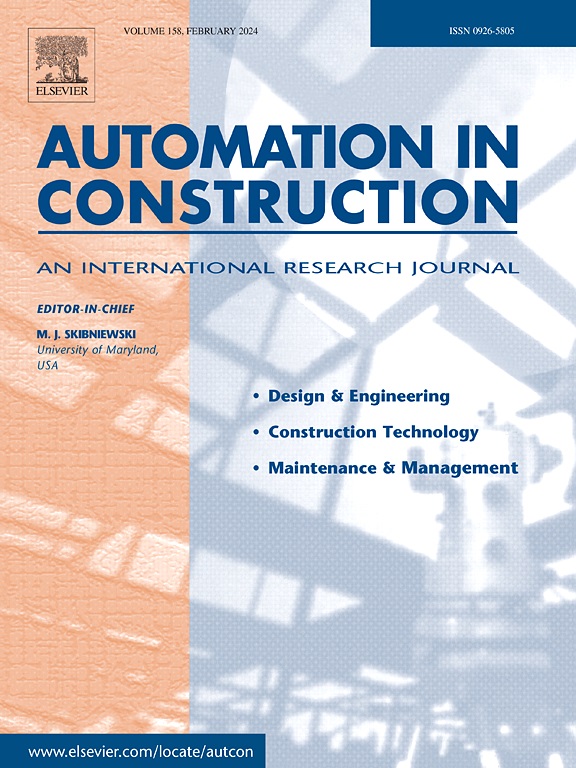Data-driven safety management of worker-equipment interactions using visual relationship detection and semantic analysis
IF 9.6
1区 工程技术
Q1 CONSTRUCTION & BUILDING TECHNOLOGY
引用次数: 0
Abstract
Existing technologies struggle to accurately identify interactions between workers and equipment, as well as the deep semantics of complex construction scenes. To address these limitations, this paper proposes an automated construction site safety management system designed to enhance scene understanding and identify safety hazards while focusing on hazard-area and personal protective equipment (PPE) interaction. The system transforms image information into worker-centric triplets and generates precise textual descriptions through semantic enhancement, enabling effective scene analysis. By comparing the generated descriptions with predefined hazard statements, the system identifies potential risks. Experimental results demonstrate a 9.6 % improvement in recall for Ng-mR@K metrics (K = 20, 50, 100). Additionally, the system successfully filters over 90 % of invalid relationships, achieving 83.7 % accuracy in semantic similarity matching, significantly enhancing detection precision and semantic understanding. By advancing from object detection to a structured image-to-triplet-to-text framework, this paper offers an efficient and reliable solution for automated construction site safety management.
使用视觉关系检测和语义分析的工人-设备交互的数据驱动安全管理
现有技术难以准确识别工人和设备之间的相互作用,以及复杂建筑场景的深层语义。为了解决这些限制,本文提出了一个自动化的建筑工地安全管理系统,旨在提高现场理解和识别安全隐患,同时关注危险区域和个人防护装备(PPE)的相互作用。该系统将图像信息转换为以工人为中心的三元组,并通过语义增强生成精确的文本描述,从而实现有效的场景分析。通过将生成的描述与预定义的危险声明进行比较,系统可以识别潜在的风险。实验结果表明,对于Ng-mR@K指标(K = 20,50,100),召回率提高了9.6%。此外,该系统成功过滤了90%以上的无效关系,语义相似度匹配准确率达到83.7%,显著提高了检测精度和语义理解能力。从目标检测到结构化的图像-三重-文本框架,为施工现场安全自动化管理提供了一种高效可靠的解决方案。
本文章由计算机程序翻译,如有差异,请以英文原文为准。
求助全文
约1分钟内获得全文
求助全文
来源期刊

Automation in Construction
工程技术-工程:土木
CiteScore
19.20
自引率
16.50%
发文量
563
审稿时长
8.5 months
期刊介绍:
Automation in Construction is an international journal that focuses on publishing original research papers related to the use of Information Technologies in various aspects of the construction industry. The journal covers topics such as design, engineering, construction technologies, and the maintenance and management of constructed facilities.
The scope of Automation in Construction is extensive and covers all stages of the construction life cycle. This includes initial planning and design, construction of the facility, operation and maintenance, as well as the eventual dismantling and recycling of buildings and engineering structures.
 求助内容:
求助内容: 应助结果提醒方式:
应助结果提醒方式:


